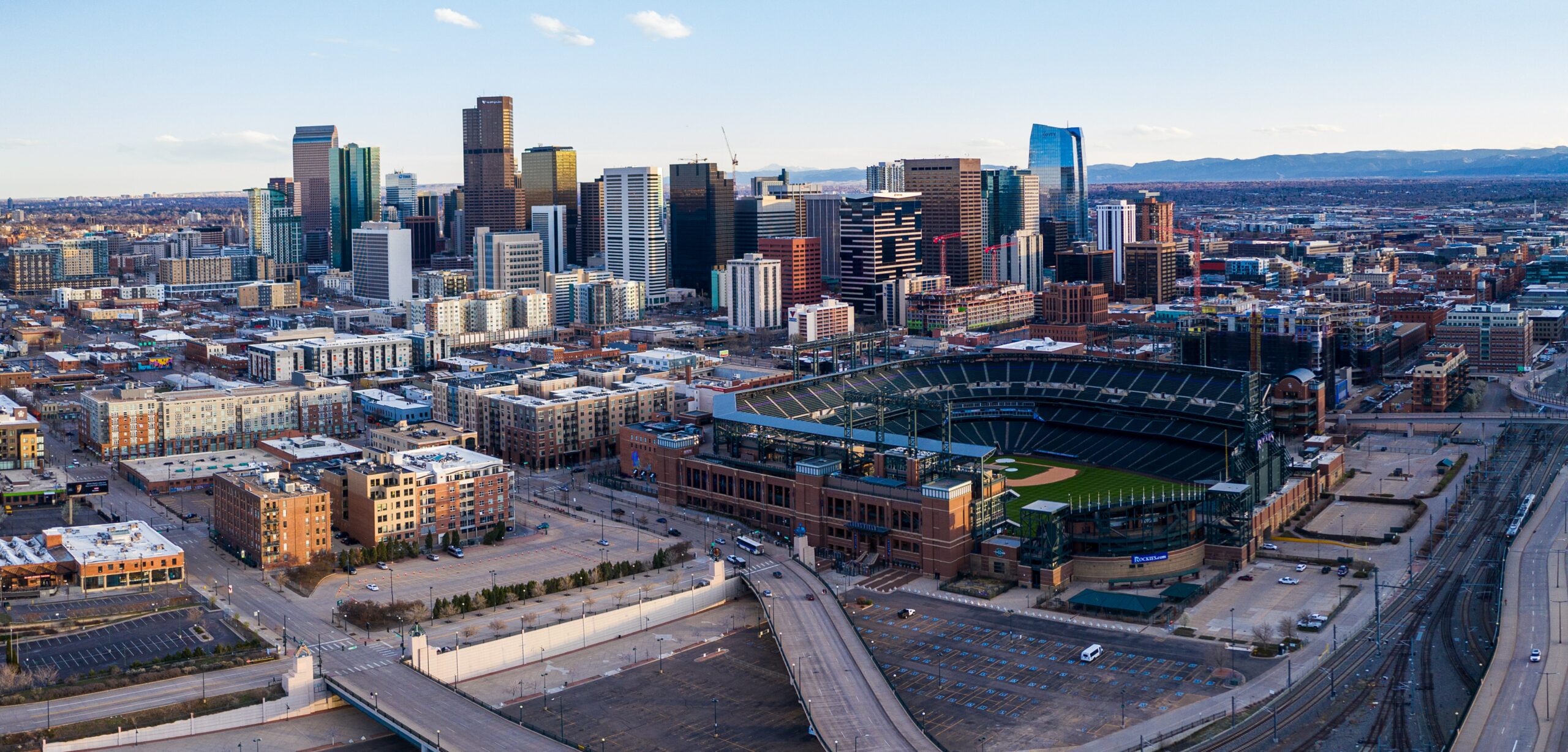Office Sector
At 17.2% as of 25Q1, Denver has one of the highest vacancy rates among major U.S. markets. Low office utilization has plagued nearly every market across the nation, but Denver is more susceptible than most due to the market’s high exposure to tech sector workers who have led the way in adopting flexible workplace arrangements.
Office availability is likely to remain elevated in Denver for some time, as current leasing trends suggest that companies are adjusting their footprints to lower space-per-worker requirements when their leases expire. Leases signed in 24Q4 averaged about 3,300 SF, representing a 40% decrease in average lease size since its peak in 2015.
There are fewer tenants in the market relative to pre-pandemic averages, but those who are in the market are placing more scrutiny on the value that potential office space would bring to their businesses. As companies move away from older office buildings and into higher-quality space, buildings constructed after 2020 are benefitting from leasing demand.
Comparatively, Denver has a high concentration of older buildings which have borne the brunt of softening demand. This subset includes some of Denver’s most iconic buildings in downtown that have struggled to maintain adequate cash flows as tenants vacate, leading to distressed or delinquent loans.
With the abundance of available space, the Denver office market remains tenant-favorable. While base asking rents have held relatively steady since the beginning of 2021, tenants have maintained leverage in lease negotiations by asking for steep concessions and higher tenant improvement allowances. Additionally, tenants can get a 30% discount on built-out sublease space relative to direct space.
Persistent weakness in the office market and an unclear outlook have suppressed investor demand. Investment volume in the past year was down by 60% from its five-year annual average, the most dramatic slowdown in sales among property asset classes. A handful of recent repeat sales ranging from trophy assets to suburban mid-rises indicate a correction in values of at least 20%.
Industrial Sector
The construction boom that caused vacancies to spike over the past two years is fading, indicating that Denver’s industrial market may be in the beginning stages of a return to balanced fundamentals. Even so, a challenging environment persists. While the vacancy rate is not expected to rise much higher, at 7.9%, it is among the highest of any major U.S. market and will likely remain elevated through early 2025 as the final wave of projects from the building boom is scheduled to deliver.
Tenant demand accelerated in the past year, coinciding with key positive economic data, including an uptick in consumer confidence and wage growth rising above inflation. Most recent leases are in the East I-70 corridor, an area of Denver that offers convenient access to major highways, rail, and Denver International Airport, as well as proximity to a skilled labor force.
A large tally of projects, a total of 4.0 million SF, is still under construction. Most of this space is scheduled to complete construction in early 2025, and new supply is projected to outpace demand through 25Q2. The big box segment will be most impacted by future deliveries, as roughly 80% of the current pipeline consists of properties 100,000 SF or larger.
However, most developments underway broke ground in early 2023 when interest rates were at all-time lows. Following national trends, developers have pulled back on construction starts amid higher rates and tighter lending requirements for construction loans. Over the past four quarters, local industrial construction starts have totaled only 2.8 million SF, down 76% from peak levels in 2022 and 47% below the pre-pandemic five-year average. This is setting the stage for fewer completions beginning this year, which should help Denver’s vacancy rate to stabilize.
Denver’s industrial market will need to contend with the remaining supply pipeline before rent growth can recover to pre-pandemic norms. With vacancies expected to remain elevated in the near-term, rent growth is projected to decelerate. However, the recent pullback in construction starts should limit additional supply pressure from hitting the market this year. With space availability likely to begin to tighten again next year, there’s potential for rent growth to accelerate during 2025-26.
Small bay properties are set to outperform, as the market remains dominated by small and midsize distribution tenants that serve the local population. With developers focused on bulk distribution centers in recent years, less new construction has been built to serve smaller tenants, and small bay properties remain in high demand with space listings that typically only last less than four months.
Retail Sector
As of 25Q1, Denver’s retail market continues to benefit from an exceptionally low availability rate, limited new construction, and a resilient consumer base. This comes despite longstanding concerns of a softening economy and Denver’s slower population growth.
Retail availability has hit a record low of 4.7%, coming in below the 10-year average of 5.4%. Low availability is beginning to impact leasing activity as tenants face challenges securing the right type of space. On the smaller end of the market, national chains, including quick-service restaurants, convenience stores, and banks, are driving leasing activity. In larger formats, experiential tenants were key drivers of demand, as reflected in the top leases signed in the first half of the year.
Denver’s construction pipeline remains subdued, and the projects that move forward overwhelmingly consist of freestanding build-to-suits. Retail inventory has grown at the slowest pace of all major asset types in Denver, helping to restore balance in the market.
While availability and new construction remain minimal, retail rents have barely risen over the past year, up by 3.6%, slightly above the national benchmark of 1.8%. When adjusting for inflation, rent growth in real terms is in negative territory. This trend contradicts the tight fundamentals that should support robust rent growth. Anemic rent growth has been broad-based, geographically and by type.
In line with national trends, transaction activity is down in the Denver market even as fundamentals remain strong. In the current high-interest rate environment, the buyer pool has shifted predominately to small private investors who target single-tenant net-leased deals valued under $5 million. Cap rates in this tier tend to be on the lower end of the spectrum but have generally moved upward since the beginning of 2022 by about half a percentage point and now average in the low-5% range. The number of deals closing above $5 million is limited, with the largest deals in the past year focused on value-added plays with higher cap rates owing to the heightened risk in this tier and the more management-intensive nature of these assets.
Denver’s retail market is projected to remain tight through 2025 due to limited new construction and positive demand. Retail sales growth has outperformed in recent years, indicating that retailers are doing more with less by focusing on efficiency in this continuously evolving sector.
Denver Economic Outlook
Denver’s economic outlook for the first quarter of 2025 is cautiously optimistic. According to the 2025 Colorado Business Economic Outlook, the state is projected to add approximately 36,700 jobs, reflecting a 1.2% growth rate. This expansion is anticipated across ten of Colorado’s eleven major industries, with sectors such as construction expected to rebound by adding 6,000 jobs due to an increase in single-family home permits. However, the information sector may experience a slight decline in employment, attributed to consolidation and automation trends. The Colorado Sun
In the commercial real estate sector, Denver continues to face challenges, particularly in office space utilization. As of January 2025, downtown Denver’s office vacancy rate has risen to 34.9%, a significant increase from pre-pandemic levels. This trend is largely due to the persistence of remote and hybrid work models, leading to reduced demand for traditional office spaces. Conversely, the industrial real estate market is experiencing growth, driven by the expansion of e-commerce and the need for distribution centers and warehouses. Denver’s strategic location as a logistics hub makes it an attractive market for industrial development. The Colorado Sun
The retail and multifamily housing sectors in Denver are also undergoing notable transformations. Mixed-use developments are on the rise, catering to the increasing demand for live-work-play environments. This trend reflects a shift towards integrating residential, office, and retail spaces to create cohesive communities. Additionally, there is a growing emphasis on sustainable building practices, with developers investing in eco-friendly designs to attract environmentally conscious tenants. These developments indicate a dynamic and adaptive commercial real estate market in Denver as it navigates the evolving economic landscape of early 2025. Mile High CRE

